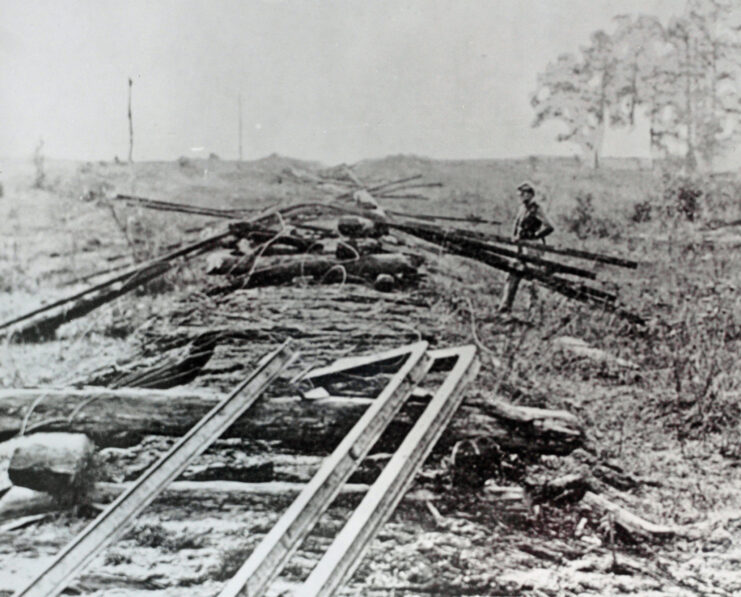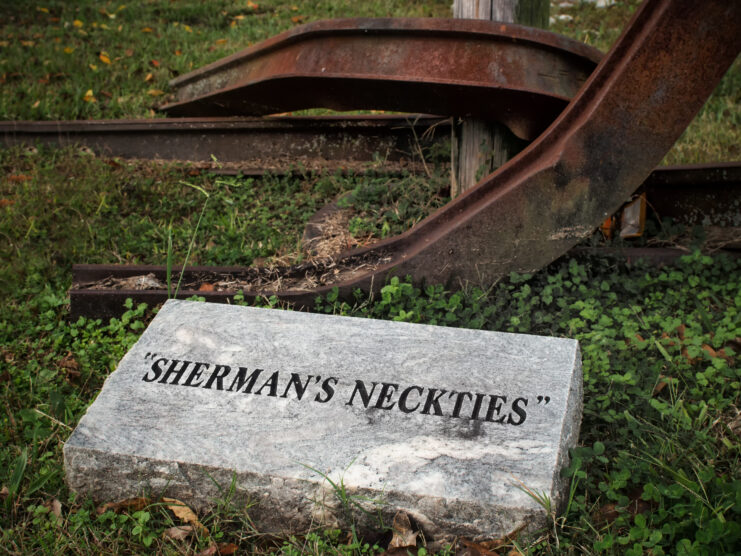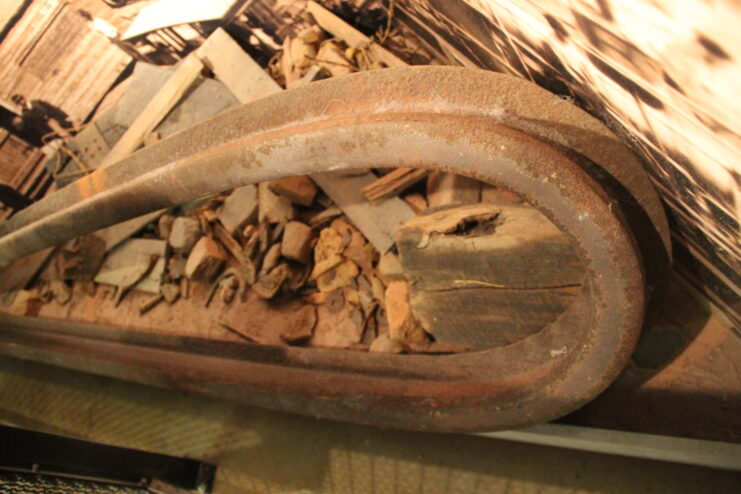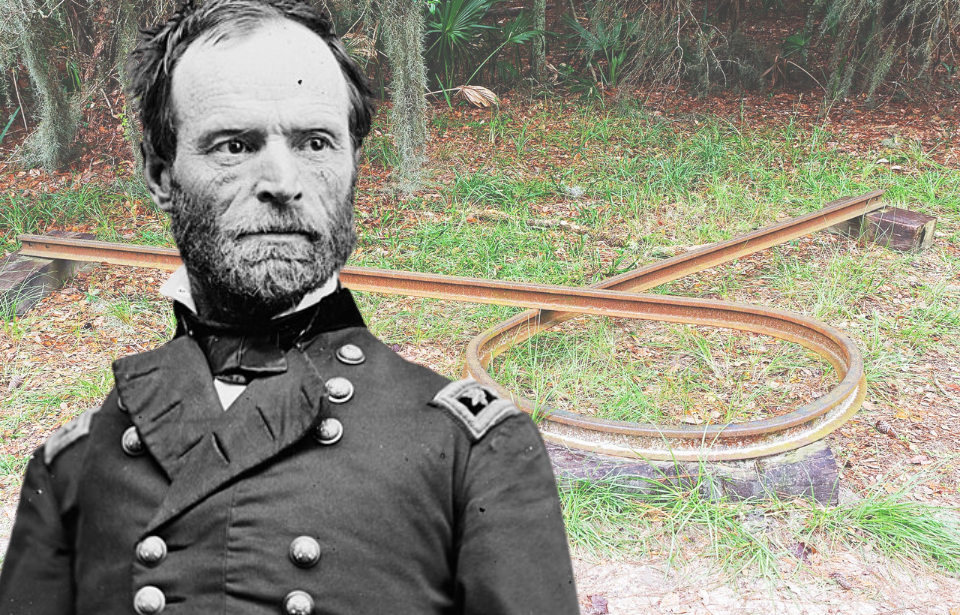Sherman’s Neckties – also known as Sherman’s Bowties, Jeff Davis’s Neckties and Sherman’s Hairpins – were railway destruction tactics used by the Union Army during the American Civil War. Named for the man behind their creation, Maj. Gen. William Tecumseh Sherman, they were used to destroy the strategic and economic warfare capabilities of the Confederacy by targeting the enemy’s railroads.
The Union Army needed to slow down the Confederates

Toward the end of the Civil War, the Union needed a way to immobilize the Confederates, and it appeared their sore spot was their limited iron supplies and foundries. During the Atlanta Campaign of summer 1864, Sherman ordered that the Union Army focus on destroying the enemy’s rail systems, to cut off Confederate troops from their supplies.
The order Sherman issued on July 18, 1864 read:
“In case of the sounds of serious battle he will close in on General Schofield, but otherwise will keep every man of his command at work in destroying the railroad by tearing up track, burning the ties and iron, and twisting the bars when hot. Officers should be instructed that bars simply bent may be used again, but if when red hot they are twisted out of line they cannot be used again.
“Pile to ties into shape for a bonfire, put the rails across, and when red hot in the middle, let a man at each end twist the bar so that its surface become spiral. General McPherson will dispatch General Garrard’s cavalry eastward along the line of the railroad to continue the destruction as far as deemed prudent.”
This began the use of Sherman’s Neckties. After just three days, all but one railroad line remained in Atlanta.
Two ways to make Sherman’s Neckties

Simply tearing up the railroad tracks wasn’t enough to damage Confederate supply lines. Once the Union troops tore them up, they didn’t have the ability, nor the resources, to remove the rails. This allowed the Confederates to repair them.
To combat this, Sherman instructed his troops to tear up the rail tracks from the crossties and place them vertically across a bonfire. As they heated up, the weight of the rail ends would bend the malleable area. However, this method wasn’t a popular approach, as it only slightly bent the rails. With enough effort, Confederate soldiers could bend the rails back to their original position and repair the tracks in a relatively swift manner.
Alternatively, the soldiers on the ground determined a more practical way of twisting the rails, so they were rendered entirely unusable. Still using the heat from a bonfire, they’d take the red-hot rail and twist it around a tree, curving it enough so the ends crossed over one another.
As they remained on the trees, they became known as Sherman’s Neckties. The Confederates didn’t have the foundry space to melt down all of the rails and create new ones, nor did they have the manpower to lay new tracks.
Meridian Campaign of 1864

The town of Meridian, located in the eastern part of Mississippi, was a strategic position for the Confederate Army. Three railroads intersected the town, and it served as a storage and distribution center for agricultural products destined for the Southern forces.
Sherman knew this was an important position and wanted to intercept and destroy the enemy’s access to the railroads. If they were successful, the Confederates would be neutralized as the Union forces moved toward the Mississippi River during their March to the Sea Campaign.
On February 3, 1864, Union soldiers began the campaign “to break up the enemy’s railroads at and about Meridian, and to do the enemy as much damage as possible in the month of February, and to be prepared by the 1st of March to assist General [Nathaniel] Banks in a similar dash at the Red River country.”
When Sherman’s men arrived in Meridian on February 14, they immediately began prying up the railroad tracks, leaving only Sherman’s Neckties in their wake. They completed their objective and returned to Vicksburg by March 6. It took the Confederates 26 days to restore the rails.
More from us: The Second Battle of Fort Wagner Proved the 54th Infantry Regiment Had the Chops
The sabotage put the South’s rail lines out of commission for nearly a month, critically impacting their position in the war and proving that Sherman’s Neckties were an effective tactic.
